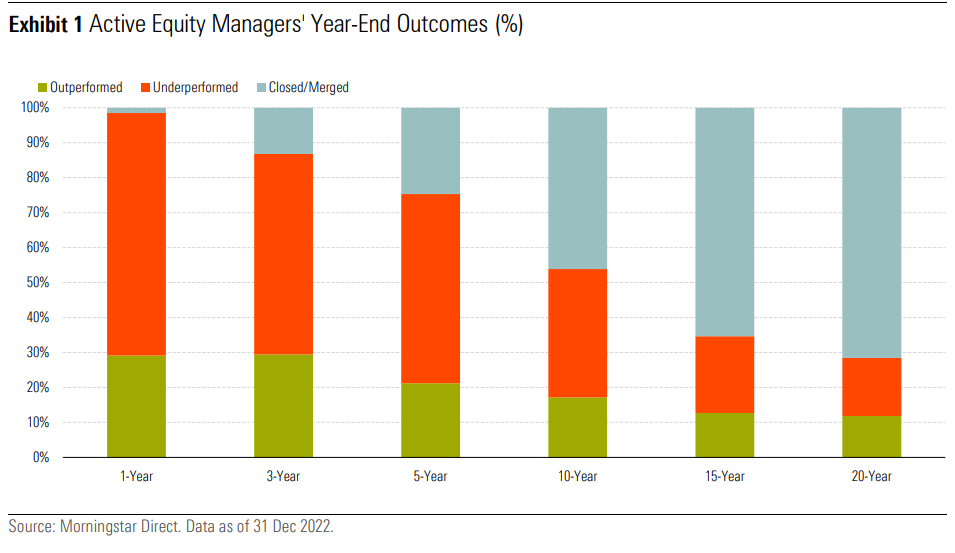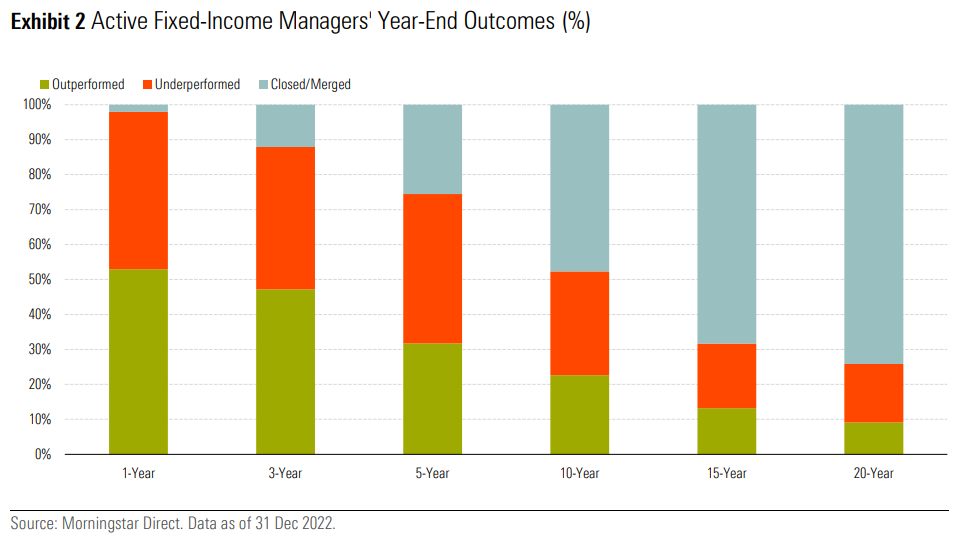2022 could have been the year where active finally started to beat passive again. As stock markets took a beating in the midst of war and rising inflation, active managers could have taken the opportunity to beat the benchmark.
But less than a third of active funds succeeded, according to a study.
Last year marked a turning point for investors. After more than a decade of quantitative easing fuelled bullish equity markets, which accelerated the trend towards passives, the S&P500 dropped by 18% in 2022 with global bond indices also reporting double-digit losses.
This could have offered a unique opportunity for active fund managers to prove their worth. But most failed to do so, according to Morningstar.
Less than a third of active equity managers, or 30.5% to be precise, succeeded in outperforming their passive peers. Outliers on the equity side where global equity income funds, where more than half of active funds managed to beat the benchmark, in large part due to successful bets on energy – a strategy which has been hard to sell to ESG-conscious investors.

The picture is somewhat less devastating for fixed income funds, where 46% of active bond funds managed to beat passives. Strategies which were able to shorten the duration were particularly successful in softening the blows in bond markets while passive funds tracking all maturity indices suffered in a rising rate environment.

This marks a significant turnaround over a 10-year timeframe. During the past decade, fixed income investors generally had an even slimmer chance of outperforming. Only 19% of active bond fund managers succeeded in steering against the flood of central bank bond purchases and beat passives, while 23% of active managers outperformed, according to Morningstar.
As a result, the past decade could be remembered for the demise of star bond fund managers, from Tim Haywood to Bill Gross as the Christine Lagarde’s, Andrew Bailey’s, Haruhiko Kuroda’s and Jay Powell’s of the world continued to dominate global bond markets.
But with the onset of quantitative tightening, this picture might be about to change as investors increasingly spot opportunities in actively managed fixed income strategies.
This might explain why most institutional investors still want the lion share of their portfolios to be actively managed, according to a Cerulli Associates survey of 200 institutional investors.
The poll revealed that 28% of respondents consider increasing their exposure to active equity strategies while 20% are considering investing more in active bond funds.
The performance-drop for index-based strategies has been particularly painful for DC investors, which last year, for the first time in a decade, reported losses for growth and retirement stage funds.
Volatile bond markets had been particularly devastating for retirement date funds where some of the biggest master trusts reported double-digit losses.





Comments